
The Battle of Lundy's Lane, also known as the Battle of Niagara, was a battle fought on 25 July 1814, during the War of 1812, between an invading American army and a British and Canadian army near present-day Niagara Falls, Ontario. It was one of the bloodiest battles of the war, and one of the deadliest battles fought in Canada, with approximately 1,720 casualties including 258 killed.
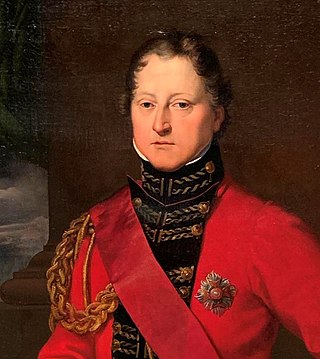
General Sir Gordon Drummond, GCB was a Canadian-born British Army officer and the first official to command the military and the civil government of Canada. As Lieutenant Governor of Upper Canada, Drummond distinguished himself on the Niagara front in the War of 1812 and later became Governor-General and Administrator of Canada.
The 96th Regiment of Foot was a British Army regiment, raised in 1798. Under the Childers reforms it amalgamated with the 63rd Regiment of Foot to form the Manchester Regiment.

The siege of Fort Erie, also known as the Battle of Erie, from 4 August to 21 September 1814, was one of the last engagements of the War of 1812, between British and American forces. It took place during the Niagara campaign, and the Americans successfully defended Fort Erie against a British army. During the siege, the British suffered high casualties in a failed storming attempt; they also suffered casualties from sickness and exposure in their rough encampments. Unaware that the British were about to abandon the siege, the American garrison launched a sortie to destroy the British siege batteries, during which both sides again suffered high losses.
The 89th Regiment of Foot was a regiment of the British Army, raised on 3 December 1793. Under the Childers Reforms the regiment amalgamated with the 87th Regiment of Foot to form the Princess Victoria's in 1881.
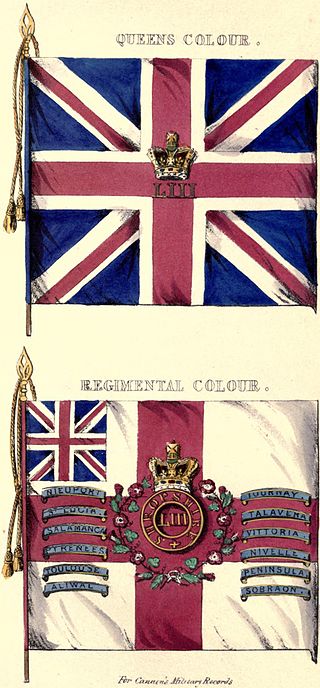
The 53rd (Shropshire) Regiment of Foot was a British Army regiment, raised in 1755. Under the Childers Reforms it amalgamated with the 85th Regiment of Foot to form the King's Shropshire Light Infantry in 1881.

The 44th Regiment of Foot was an infantry regiment in the British Army, raised in 1741. Under the Childers Reforms it amalgamated with the 56th Regiment of Foot to form the Essex Regiment in 1881.
The 38th Regiment of Foot was an infantry regiment of the British Army, raised in 1705. Under the Childers Reforms it amalgamated with the 80th Regiment of Foot to form the South Staffordshire Regiment in 1881.
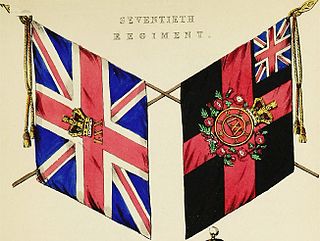
The 70th (Surrey) Regiment of Foot was a regiment of the British Army, raised in 1756. Under the Childers Reforms it amalgamated with the 31st (Huntingdonshire) Regiment of Foot to form the East Surrey Regiment in 1881.
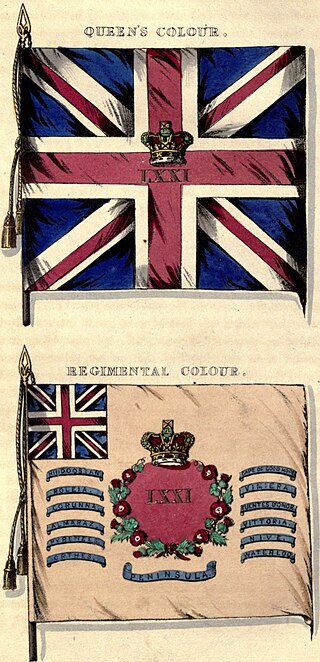
The 71st Regiment of Foot was a Highland regiment in the British Army, raised in 1777. Under the Childers Reforms it amalgamated with the 74th (Highland) Regiment of Foot to become the 1st Battalion, Highland Light Infantry in 1881.
The 41st (Welch) Regiment of Foot was an infantry regiment of the British Army, raised in 1719. Under the Childers Reforms it amalgamated with the 69th Regiment of Foot to form the Welch Regiment in 1881.

The 81st Regiment of Foot (Loyal Lincoln Volunteers) was an infantry regiment of the British Army, raised in 1793. Under the Childers Reforms it amalgamated with the 47th (Lancashire) Regiment of Foot to form the Loyal North Lancashire Regiment in 1881.
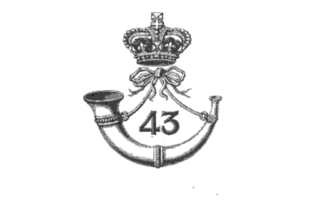
The 43rd (Monmouthshire) Regiment of Foot was an infantry regiment of the British Army, raised in 1741. Under the Childers Reforms it amalgamated with the 52nd (Oxfordshire) Regiment of Foot to form the 1st and 2nd battalions of the Oxfordshire Light Infantry in 1881. The regiment went on to become the Oxfordshire and Buckinghamshire Light Infantry in 1908.
The 58th (Rutlandshire) Regiment of Foot was a British Army line infantry regiment, raised in 1755. Under the Childers Reforms it amalgamated with the 48th (Northamptonshire) Regiment of Foot to form the Northamptonshire Regiment in 1881.
The 62nd (Wiltshire) Regiment of Foot was an infantry regiment of the British Army, which was raised in 1756 and saw service through the eighteenth and nineteenth centuries. Under the Childers Reforms it amalgamated with the 99th (Lanarkshire) Regiment of Foot to form the Wiltshire Regiment in 1881.
The 74th (Highland) Regiment of Foot was a British Army line infantry regiment, raised in 1787. Under the Childers Reforms it amalgamated with the 71st (Highland) Regiment of Foot to form the Highland Light Infantry in 1881.
The 83rd Regiment of Foot was a British Army line infantry regiment, which was formed in Ireland in 1793 for service in the French Revolutionary Wars. The regiment served in the West Indies, South Africa and the Peninsular War, and after the end of the wars with France spent much of the nineteenth century in colonial garrisons. Among other service, the 83rd fought in the Ceylon Great Rebellion of 1817–18, the Canadian Rebellions of 1837, and the Indian Rebellion of 1857. Under the Childers Reforms, the regiment amalgamated with the 86th Regiment of Foot to form the Royal Irish Rifles in 1881.
The 85th Regiment of Foot was a British Army line infantry regiment, raised in 1793. Under the Childers Reforms it amalgamated with the 53rd (Shropshire) Regiment of Foot to form the King's Shropshire Light Infantry in 1881.
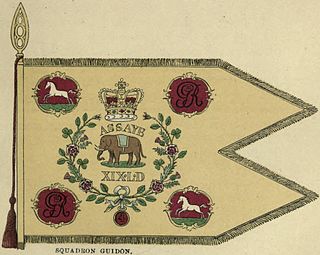
The 19th Light Dragoons was a cavalry regiment of the British Army created in 1781 for service in British India. The regiment served in India until 1806, and in North America during the War of 1812, and was disbanded in Britain in 1821.
104th Regiment of Foot was a regiment of the British Army. The regiment had its origins in the New Brunswick Regiment of Fencible Infantry, a unit of fencibles raised for the defence of the colony of New Brunswick in 1803. Recruits were drawn from across British North America, Scotland, Ireland and existing British Army units. The regiment was formally entered into the establishment in 1806 with a strength of around 650 enlisted men but grew to almost 1,100 by 1808. In 1810 the regiment's officers requested that it join the British Army as a regiment of foot. This request was granted on 13 September 1810 and the unit was renamed the 104th Regiment of Foot.









